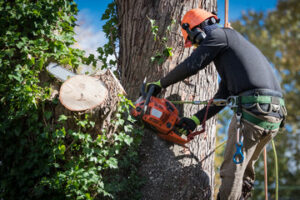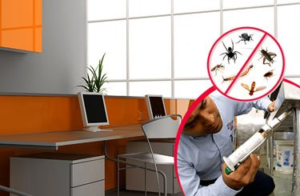A home’s roof protects everything inside. Keeping it free from algae, moss, lichen, debris and dirt extends its lifespan and helps maintain energy efficiency.
There are two types of roof cleaning: pressure washing and soft washing. Both require an experienced professional to avoid damaging shingles or other materials. A pressure wash uses high-pressure water, which can dislodge granules that coat shingles and lower their life expectancy. Contact Roof Cleaning MT Pleasant now!

The roof is a large part of the exterior of your home and, therefore, plays an important role in your curb appeal. Dirty, moss-covered, or stained roofs can significantly detract from your home’s overall beauty and appearance. Professional cleaning removes unsightly discoloration and leaves your roof with a clean, fresh appearance. This enhancement of your curb appeal will have a positive impact on your entire neighborhood and community.
In addition to enhancing your curb appeal, roof cleaning can also protect your roof from damage and improve energy efficiency. Over time, dirt and grime can cause shingles to deteriorate, reducing the life expectancy of your roof and ultimately leading to costly repairs. Regular roof cleaning prevents this buildup and extends the lifespan of your shingles.
Roof Cleaning can also help you prepare your home for sale, increasing its resale value. Potential buyers will be more likely to make an offer on your home if it has an appealing exterior. A dirty, dingy roof can be very off-putting and may deter them from making an offer on your property. A non pressure Roof Cleaning will safely and effectively remove stains, moss, and dark discoloration from your roof shingles, leaving them looking new.
Homeowners often focus on improving their curb appeal by landscaping and painting the exterior of their homes. However, they forget that the roof is a vital part of the curb appeal of their home. Overtime, it can become stained or dingy due to dirt, moss, and mildew. This can detract from your home’s curb appeal and make it appear neglected. A professional Roof Cleaning by Kingwood Pressure Washing can restore your roof to its original beauty and enhance the curb appeal of your home. It can also save you money on your energy bills by ensuring that your home is properly insulated and reflecting sunlight rather than absorbing it. This will reduce the strain on your air conditioning system during warmer months. These benefits of Roof Cleaning can significantly increase your home’s curb appeal and resale value.
Debris Removal
Debris build-up on the roof can have a number of negative effects, from cosmetic to structural. It can reduce the lifespan of your shingles by allowing the growth of mildew, mold, and algae, which will eat away at the surface. It can also trap moisture, which can lead to sagging or warping of the roofing materials. This can lead to leaking and expensive repairs down the road. Keeping the debris off your roof will help extend its life expectancy, saving you money on costly replacements.
Whether organic, like leaves or pine needles, or inorganic, like garbage, debris can pile up on the roof and block gutters, leading to water overflow and other problems. This is particularly common in areas where trees are nearby and constantly drop their waste, or in the aftermath of storms, when branches and large debris can be tossed onto roofs. Regular cleaning helps prevent this build-up, protecting the integrity of the roofing material.
It can be a dangerous job to clean the roof, but the right tools make it much easier. Specialized roof vacuums can suck up leaves and other debris without the need for manual collection, which minimizes the risk of slips and falls. Alternatively, a good household broom can be used to sweep away smaller debris and twigs. If you choose to do the work yourself, be sure to use the proper safety equipment, and carefully check your ladder before climbing it.
Regular cleaning also gives you the opportunity to inspect the shingles for damage. If you notice a loose or missing shingle, it should be replaced as soon as possible to avoid leaks and further damage to the home. If you see signs of moss or algae growth, it should be treated as soon as possible to prevent further spread and staining.
In areas prone to wildfires, a debris-laden roof can be a fire hazard, potentially spreading the fire to the rest of the structure. Regular cleaning and inspections will prevent this, minimizing the risk and ensuring the integrity of the building.
Prevents Damage
Algae, moss and mildew deteriorate roofing materials over time, leading to leaks and roof rot. Regular roof cleaning removes these organisms and prevents them from returning, extending the lifespan of your roofing material.
Organic matter such as leaves, twigs and branches accumulate on the roof, blocking sunlight and encouraging moss and mildew to grow. They also clog gutters and prevent water from draining off the roof, creating a pool of moisture and increasing the risk of damage. Regular roof cleaning prevents this buildup, allowing your gutters and downspouts to function properly.
Dirty roofs absorb and retain heat, increasing the energy costs of air conditioning during hot weather. A clean roof, on the other hand, reflects sunlight and maintains cooler temperatures inside the home. Regular roof cleaning can help you save money on energy bills and reduce your carbon footprint.
Stains, moss and algae can cause roof deterioration by trapping moisture and eating away at the limestone filler agents in shingles. By removing these elements, roof cleaning extends the life of your roofing material and helps prevent costly replacement costs in the future.
A dirty roof attracts birds and insects, which can cause further damage by scratching and pecking at the shingles. Once the shingles are damaged, they become an attractive nesting ground for mold and ants. When these contaminates seep into the home, they can cause respiratory problems and allergies in family members. Regular cleaning reduces these contaminates and prevents their recurrence, ensuring the health and safety of your family.
When you notice black streaks or discoloration on the roof, it is time for a professional cleaning. A professional will use a chlorine bleach solution to lighten stains and kill any living organisms. This is much safer and more effective than scrubbing, which can dislodge and break apart the shingle granules that protect the asphalt shingles from sunlight. It is important to cover plants and grass with tarps and clear out the gutters during this process to avoid damaging them. Crepe myrtles, in particular, are extremely sensitive to bleach and will die if exposed.
Prevents Leaks
Many common household leaks can be prevented by a clean roof, properly functioning gutters, and regular inspections. These simple maintenance tasks can extend the lifespan of your roofing materials, reduce energy costs, and create a healthier living environment by eliminating mold and mildew.
Moss and Algae Deterioration
The accumulated debris from leaves, twigs, branches, dirt, and other organic growth can trap moisture on your roof, encouraging the growth of moss and algae. This slow, silent damage can compromise the integrity of your roofing materials and lead to leaking and water damage inside your home.
Regular roof cleaning helps prevent the buildup of these unwanted organisms by killing their spores and dissolving their roots. It also removes clogged debris and scours away dirt that can collect in the gutters and downspouts, which then cause water accumulation on the roof surface. With a clean, well-maintained roof, rainwater is allowed to flow freely off the property and away from the home, reducing the risk of water damage.
Leak Prevention
Water stains on the ceilings and walls, an increased water bill without explanation, and that pesky “drip” sound are all signs of hidden leaks in your home. If left unchecked, these leaks can lead to expensive repairs and structural damage. Regular roof cleanings can identify and address these problems before they become major issues.
During the cleaning process, a solution is sprayed onto the roof to break down grime and kill fungus, mold, and other unwanted organisms. This solution is often chlorine bleach (the same kind you use to whiten laundry and scrub your toilet) at a concentration of 50/50 with water. A low-pressure hose is then used to wash the solution and debris from the roof. It’s important to start at the highest point and work downward, so as not to disturb the shingles or force water under them, which could lead to shingle damage or leaks.
As a homeowner, you know the value of your roof and how it protects your home from the elements. It’s a substantial investment that deserves to be protected and maintained for years to come.








